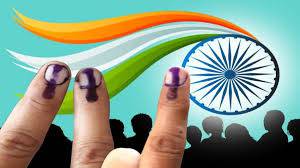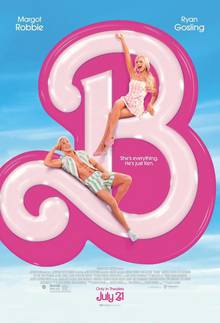With the general elections of the Tamil Nadu Legislative Assembly coming to an end, let us take a moment to understand the history, evolution, and forms of elections that were in practice since ancient times.
People choosing their leaders through a democratic process of elections is not new to India. However, the process of electing leaders has changed drastically over time. During the reign of Chola Emperors in modern day Tamil Nadu, a system of election known as the Kudavolai System was practiced for electing village administrative heads. The inscriptions on the Uttiramerur Temple, situated 90 km from Chennai, mentions the Kudavolai system. This system was a noteworthy and remarkable feature of the village administration under the Cholas.
According to the Kudavolai, villages were divided into thirty wards and a representative from each ward was elected through this system. Interestingly, contestants submitted their nominations on palm leaves by writing their names on them. These palm leaves would then be put into a pot and shuffled well. A young boy would then be chosen to pick palm leaves at random from the pot. Those whose nominations were selected would be declared as the representatives. In a similar fashion, 30 representatives were selected for their respective wards. Out of these thirty representatives, twelve were assigned to the Annual committee, twelve to the Garden Committee, and six to the Tank committee.
Eligibilities specified for contestants under the Kudavolai System were interesting. Only those who aged between 35 and 70 years were eligible to contest in elections. Contestants must also possess at least one veli (unit of measurement) of land and must have a house built on taxable land. Those who committed crimes and were punished under the reign were made ineligible to contest in these elections.
Speaking of elections during the recent past, we are all taught that Indians voted for the first time in 1951. However, elections for Indians in British India's legislative bodies date back to 1909, when elections for the representation of Indians in British India's legislative bodies were conducted for the first time under the Indian Councils Act of 1901. This Act passed by the British Parliament gave approval to a scheme known as the Morley–Minto Reforms that helped set up local legislative councils under various governors. The first Central Legislative Council consisted of 68 members, of whom 27 were elected representatives. However, they were not chosen by the general public but by special constituencies, such as municipalities, district boards, universities, chambers of commerce and trade associations, and groups of people in power such as landholders and tea-planters.
The Government of India Act, 1919 had further provisions. A bicameral legislative body was formed at the Centre, where the State's council and the Central Legislative Assembly were referred to as the Upper House and the Lower House. For the first time, the elected members had the upper hand by constituting the majority in both the Houses. The Central Legislative Assembly consisted of 145 members, of which 105 were elected. Assembly members had a tenure of three years. Though the Act introduced elections, the number of voters was limited based on eligibilities such as educational qualifications, property ownership, payment of taxes, etc.
Today, direct elections are held at three different levels: Centre (Lok Sabha), State Legislatures, and Local Bodies. In all these elections, the first-past-the-post (FPTP) system is followed. According to FPTP, candidates with the most votes are declared winners. Elections are held by a special constitutional body known as the Election Commission of India (ECI). After India gained independence in 1947, the first general elections to the Lok Sabha took place in 1951-52, during which people from all over India who were above the age of 21 were allowed to vote. However, the age requirement was reduced to 18 in 1989 following the enactment of the 61st Constitutional Amendment Act, 1988.
The Electronic Voting Machines (EVMs) were introduced for the first time during Kerala's general election in May 1982. However, the absence of a law prescribing its use led to the Supreme Court invalidating the election results. Subsequently, in 1989, the Parliament amended the Representation of the People Act, 1951, by creating a provision for EVMs in elections. A consensus on its introduction was reached only in 1998. It was used in 25 Legislative Assembly Constituencies spread across Madhya Pradesh, Rajasthan, and Delhi. Its use was further expanded in 1999 to 45 Parliamentary Constituencies and later, in February 2000, to 45 Assembly Constituencies at the Haryana Assembly elections. During the State Assembly elections held in May 2001, Tamil Nadu, Kerala, Puducherry, and West Bengal used EVMs. Since then, EVMs have been widely used. In 2004, during the General Elections to the Lok Sabha, EVMs were used in all 543 Parliamentary Constituencies. Very recently, The ECI has also launched the e-EPIC facility for voters to download from their website. Voters can also access affidavits of all the candidates contesting in elections through the Commission's website.
The election process in India has undergone various changes since its inception. Thanks to the current advancements in technology, we have all the required details about different political parties and candidates at our disposal. Using the same, we hope each of you successfully cast your votes, as voting is not just a right but a responsibility. We, as citizens, must acknowledge the same and contribute towards upholding the spirit of democracy.





